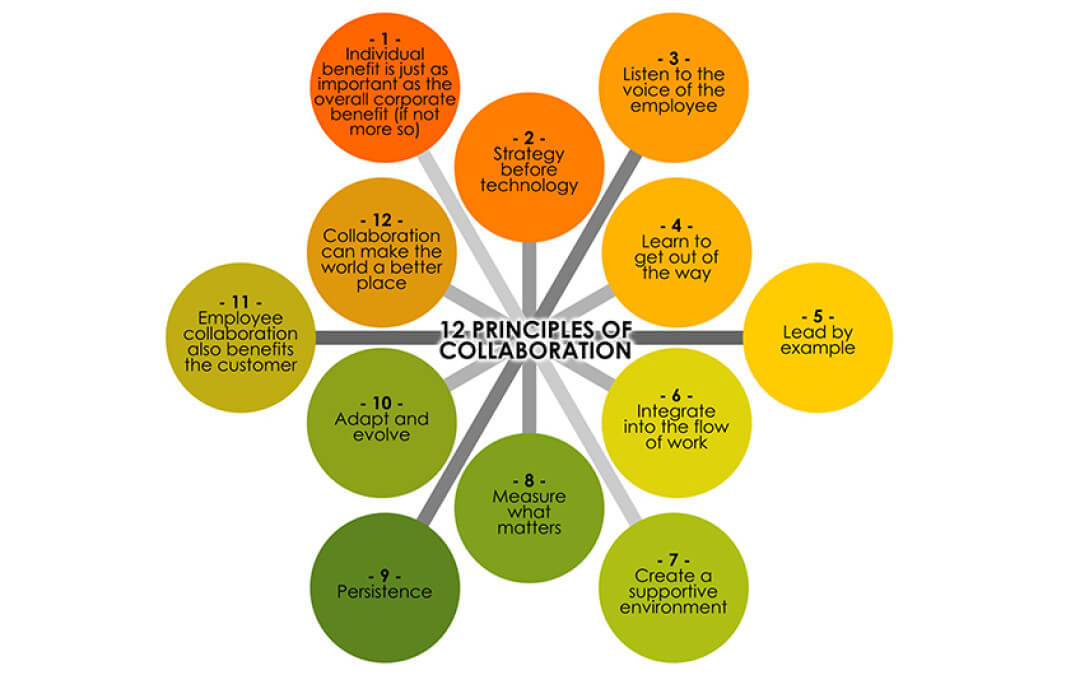When people, departments, offices, and divisions collaborate, beautiful things happen. New product ideas are born. Smarter, more efficient processes emerge. More effective policies are developed. New energy is created.
The rewards of collaboration are many, yet the spirit of collaboration is dimmed in many enterprises. There are many reasons for this, all of which add up to costly consequences. Human potential is unrealized. Capital isn’t effectively deployed. Resources are squandered. Growth, development and innovation are stymied.
Enlightened organizations counter the forces that inhibit collaboration by actively encouraging it through fresh attitudes and behavior driven by a purposeful promise.
By inspiring employees to aim for a higher purpose, these leaders help people more readily find common ground and work to a shared purpose. Employees latch onto these ideals when there’s otherwise not enough in their work to engage and motivate them. The fact is, lackluster workplaces don’t fill people with the desire and urge to collaborate.
Beyond the will of employees, often it is business structures, systems, and attitudes that make it difficult to collaborate. It can take considerable energy and spirit to overcome these resistances. Disengaged and unmotivated employees have neither the compunction nor strength to give what it takes to reach out and work with others.
Changing your businesses attitudes and behaviors through a purposeful promise won’t instantly topple the barriers to free-flowing and proactive collaboration. But it just may give some bright sparks in your organization the emotional incentives they need to flex their muscles, reach out across lines, and forge far more fruitful alliances.
Their successes – and a culture that recognizes and rewards them – will inspire others to lower their defenses, open up to new possibilities, and work together through a shared purpose.
Small steps can become big leaps. But you need to take the first step.





